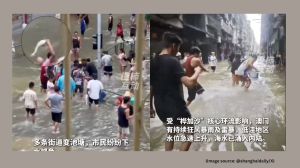Meena doctors disappear, Gurjjars do not want them to even conduct autopsy
At Ground Zero of Rajasthan’s caste violence, the divide is now so deep that the Gurjjars refused to hand over the bodies of the four killed on Friday unles they were assured...

At Ground Zero of Rajasthan’s caste violence, the divide is now so deep that the Gurjjars refused to hand over the bodies of the four killed on Friday unles they were assured that doctors from the Meena community would not perform the autopsy.
Doctors belonging to the Meena community at the Lalsot Community Health Centre (CHC) or nearby private clinics have already gone on leave or have simply locked up their clinics.
At the Lalsot CHC, the most experienced doctor, Dr M D Meena, proceeded on leave just as the injured and bodies of Gurjjars were being brought in.
The Navjeevan Hospital, owned by a group of Meena doctors, is locked since Friday evening.
Head of the CHC Dr K V Chippa says: “It is just a precautionary measure. All Meena doctors, nurses, para-medical staff have been asked to go on leave because if anything untoward happens they would be blamed by the Gurjjars.”
Fear and hatred are playing out in neighbourhoods across Lalsot. Till Thursday, neighbours Kheraj Gurjjar and Ramniwas Meena were loyal friends. But on Friday, after four Gurjjars and a Meena were stabbed to death in Lalsot, the childhood friends turned into bitter enemies, swearing to ‘knife’ each other to death if they cross paths.
“I and my family will starve but I won’t supply milk anymore to the Meenas. I have warned my sons not to talk to any of their Meena friends,” says Kheraj, one of the few Gurjjars in Lalsot owning land and cattle.
When the Kheraj family stopped supplying milk, his Meena neighbours raised the ante. “We don’t want to have anything with the Gurjjars anymore. They cannot be equal to us and we won’t allow them to be,” Ramniwas Meena says.
The affluent and economically more powerful Meena community and the socially and economically backward Gurjjars have been interdependent. The Meenas owned the fields, cattle, and saw mills but it was left to the trustworthy Gurjjars to cultivate the fields, tend the cattle and supply milk to Meena households. Labourers engaged by the Meenas were all Gurjjars.
“But all that has changed in a day and because of that one single incident. Meenas and Gurjjars will never trust each other again. This is a conflict that has become more venomous than the Hindu-Muslim divide and there is no compromise or end in sight right now. As things stand today, Meenas and Gurjjars will attack and kill each other at sight,” says Jairam Singh Gurjjar, head of Dev Sena Sangh Rakshak, an all-Gurjjar organization working in Dausa district.
“For years, the Gurjjars have been treated with contempt by the Meenas though they coexisted, but now I think the Gurjjars are demanding their rights and the Meenas feel threatened. That is why the reservation agitation turned into a caste conflict,” says Lalsot’s Tehsildar Kamal Singh Gurjjar.
But Lalsot is neither a place that is far removed from civilization nor are Gurjjars a community that is treated like Dalits elsewhere. In fact, most of the 10,000-odd Gurjjars are well-off, their houses in Lalsot are ‘pucca’ with Tata Sky antennas on the rooftops.
“It’s their fault, they started the agitation demanding equal status, the Meenas as a community is definitely opposed to it because it has nothing to do with government jobs. It is all political, the Gurjjars want to increase their number of MLAs in the reserved seats,” said Lalsot Meena community leader and BJP MLA Virendra Kumar Meena, minister of state for finance, on the telephone from Jaipur. “Now it has become a matter of status.”



- 01
- 02
- 03
- 04
- 05




























